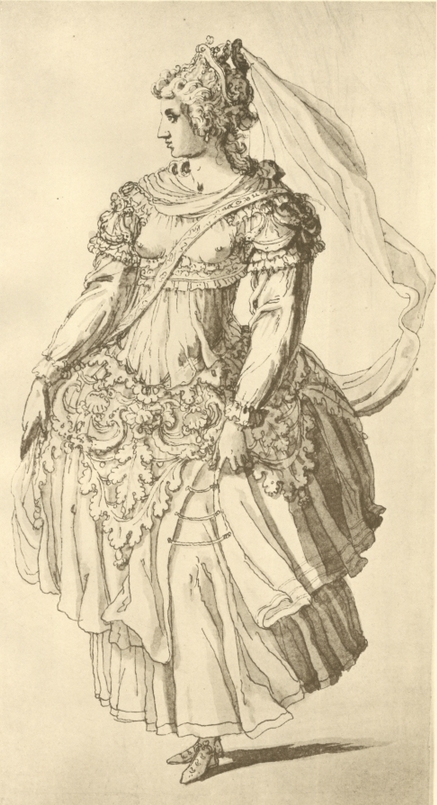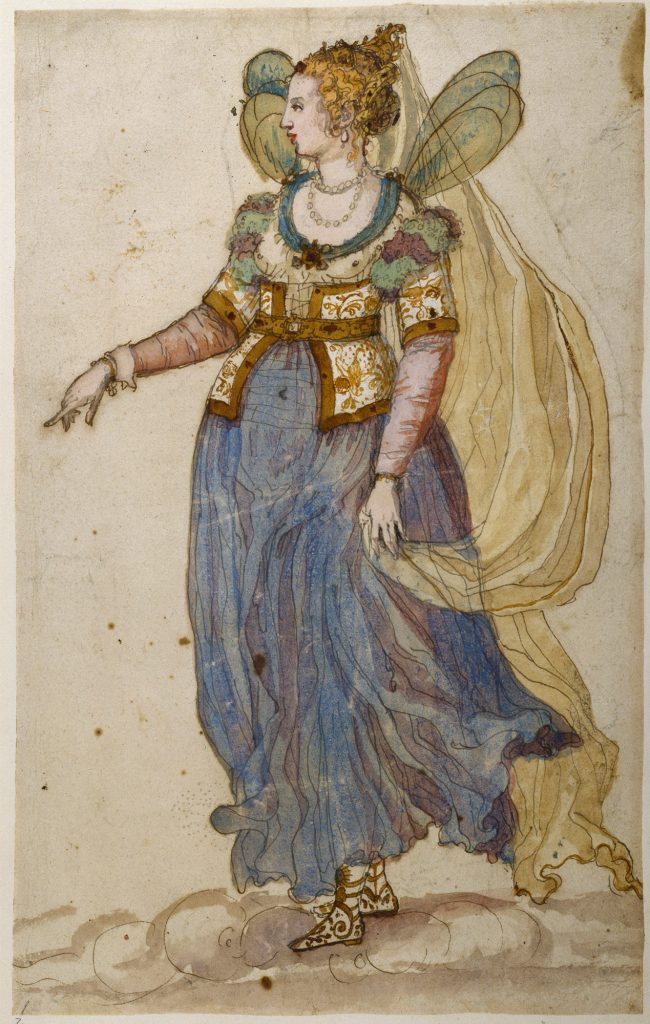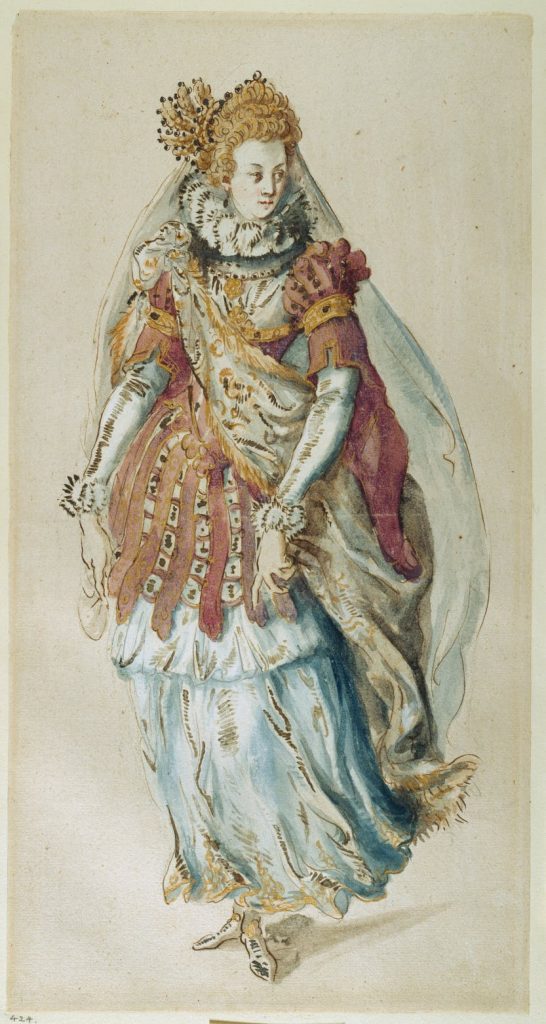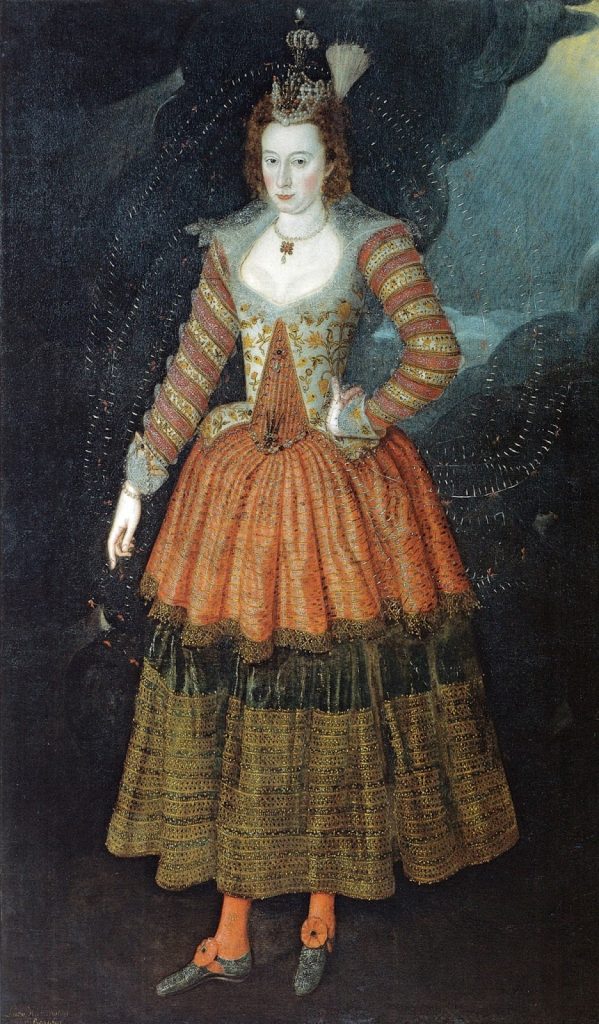Enter CERES.
CERES Hail, many-coloured messenger, that ne’er
Dost disobey the wife of Jupiter;
Who, with thy saffron wings, upon my flowers
Diffusest honey-drops, refreshing showers,
And with each end of thy blue bow dost crown
My bosky acres and my unshrubbed down,
Rich scarf to my proud earth. Why hast thy queen
Summoned me hither to this short-grassed green?
IRIS A contract of true love to celebrate,
And some donation freely to estate
On the blessed lovers. (4.1.76-86)
Ah, some costume notes. Many-coloured, as would be expected for the rainbow. Saffron wings – probably not feathery or scaly harpy-type wings, but perhaps some yellow-tinted gauzy drapery, possibly wired, as often seems to feature in masquing costumes. Saffron much more exotic, and also more sensual, than simply yellow; it was a familiar, if expensive cooking spice, grown in England (Saffron Walden!); its invocation here might, for some, conjure its source, the springtime crocus flower, and also perhaps the deep yellow veil, the flammeum, worn by brides in ancient Rome, especially if Iris were wearing a yellow drapery. Surviving masque designs and portraits suggest that such costumes often featured gauze layers that would flutter and float to spectacular effect when the masquers danced. Iris brings rain, refreshing showers, here also imagined as honey-drops, sweet. (So, smell and taste and touch are much more present here than in Iris’s own speech; the syntax and language are also much more straightforward.) Ceres’s landscape is both bosky, fields covered with shrubs and bushes, and unshrubbed, its downs or slopes covered, presumably, with grass alone. (Bosky is an excellent word and deserves to be used more widely. Bring back bosky.) This land is crowned with the rainbow, the blue bow, which is as a rich scarf to the proud earth. And the landscape is also a body, a female one. The enormous scale of Iris’s fly-over vision is reduced, or at least balanced, by this implicit imagining of this body, its curves and contours. Scarf, too, has a tactile appeal: scarves tended to be made of silk, and were often brightly coloured; they could be tied, but were often more casually draped. And Ceres gets quickly to the point: why has Juno summoned me here to this short-grassed green?(Not bosky, not shrubbed, not pioned or twilled or turfy or rocky-hard. This is a nicely mown lawn. There is going to be dancing…) You—we—are here to celebrate a wedding, and to present gifts to the happy couple, the blessed lovers.
Some images below of designs for masquers by Inigo Jones, plus a portrait; the latter two are exactly contemporary with The Tempest, and all of them give a good sense of the role of draperies and layers (as well as possible wings). There’s good information and some additional masque-related images here:





